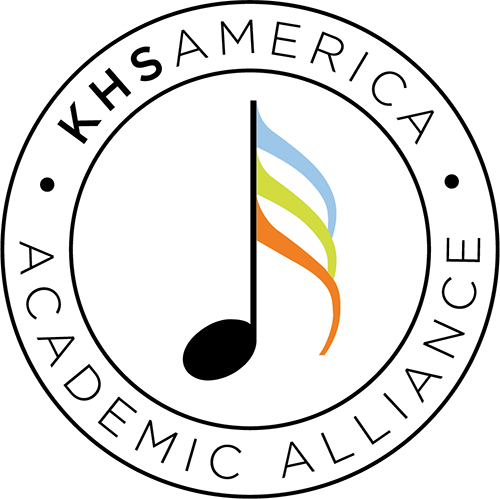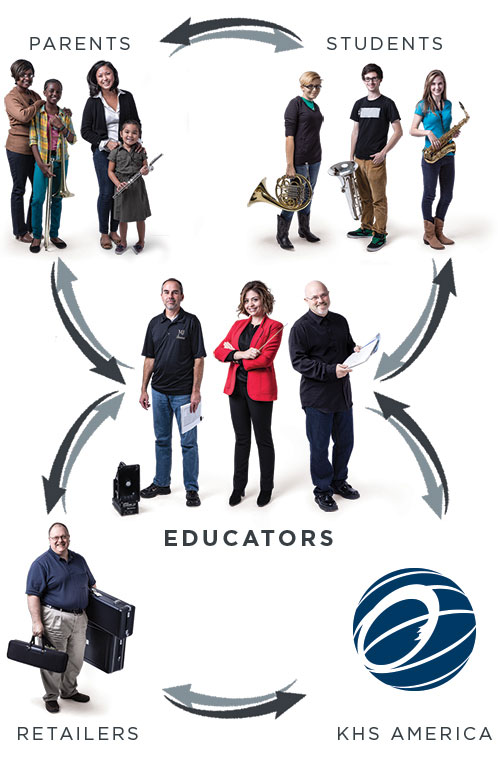If we take a moment to look at school music programs around our nation, we may be inclined to believe that music instrument instruction is a luxury reserved for a select few. We may also be holding on to an archaic belief that only a small percentage of students are capable of learning an instrument, or are “naturally talented” in the arts. But what is the truth of the matter? Under all the right circumstances, what percentage of children in school are “meant” to stick with a musical instrument?
The fact is, all students would be better served if they learned an instrument as part of school curricula, and I would argue that schools are denying the opportunity for most students to realize a passion and desire to play an instrument throughout their K-12 education. There are many who argue that there is a large percentage of students who aren’t musically talented or don’t have the desire to play, but I contest that conditions in schools and the way music is valued by our system (and therefore our communities) creates that lack of “desire”.
So how do we level the playing field? What are some of the “right” circumstances that will allow music to be an essential component of every school day? Here are some ways that schools can create an appropriate environment for students to enjoy music as part of their core education:
Our communities must declare that creativity is as the heart of education. Even though a policy for creativity in education needs to be about everybody, not just a few, we don’t need to wait for this to happen at the federal level. Local school systems can have an open dialogue about how all students are born creative and how our systems have been stifling that creativity as the school years progress. Learning to be creative is not an extra-curricular or a “special” activity; education for creativity is about the whole curriculum, not just part of it.
Schools must schedule musical instrument instruction 5 days a week for all students. Elementary and middle school music scheduling is one of the primary reasons for the massive attrition rate in young musicians we have in this country. Whereas many high schools have bands/orchestras/choruses that meet 5 days a week, elementary school instruction is 1 day a week, and middle school instruction is 2 to 3 days, on average. How can we possibly expect students to be successful with such a small amount of contact time? As much as I am committed to helping parents assist their children in practicing at home, five days a week of instruction during the school day would alleviate the need for parents to “make up” that missed time. Any academic subject that only meets 1 or 2 days a week in school requires students (and parents) to ensure they learn the subject matter on their own, while diminishing the chances of that subject “sticking” in each child’s life.
Schools must identify and support great music teachers. Schools with thriving music programs all have one thing in common: a great music teacher at the helm. Obviously, there is a higher student retention rate when there is great teaching accompanied by administrative support for the program. Any argument against music as part of every school day is seriously diminished when there is a great teaching — we have all seen students involved in programs we never would have imagined simply because there is a wonderful teacher leading the way. Of course, these great teachers must be supported once they are hired — I have seen too many teachers fail due to a lack of support on the administrative level.
Instrumental music instruction must begin at the youngest ages. In the school district where I worked as a music supervisor, music instrument instruction began in 5th grade. There is no doubt that this is way too late to begin students on instruments — they are capable of reaping enormous benefits from music so much earlier. So we launched a K-4 Suzuki-inspired violin program that was wildly popular — hundreds of students take part in it to this day. But why should this instruction not be part of every school day instead of after school? Even something as simple as a “push-in” model where every student takes a 20-30 minute break during the day to receive violin instruction could have incredible benefits and a profound impact on school and community culture. One day a week of general music class is not enough for our youngest children — we must do more.
Schools must increase musical offerings. Band, orchestra, and chorus are great. But there are more opportunities than that to accommodate all types of learner and students from all walks of life. Mariachi, world drumming, and electronic music are a few offerings that speak to different subsets of our student population. The more offerings there are in school curricula, the higher chance there is of all students being involved and reaping the benefits of a life immersed in the arts.
Passion and play must be supported by schools. Not all young students will become professional musicians or music majors in college, but let’s be clear: all young children are musical and have music inside them. Parents and educators who encourage and create time for students to find and pursue a passion know that it may be more important than mere academic achievement. School leaders who encourage time in every school day for students to find and pursue an intellectual or artistic passion have better schools. And it’s not always music that becomes the child’s passion — their passions morph and evolve into a deeper sense of purpose over time — and that’s what school should be all about.
All students should learn to play a musical instrument as an essential part of their K-12 schooling — 100% of children are “meant” to play an instrument. The only reason it isn’t happening now is due to the climate, culture, and curricula in our schools. In our world, problems can no longer be solved or even understood within the narrow academic disciplines we are used to seeing on our children’s school schedule. This is a crucial time for our society to embrace arts instruction in schools.
Are our children really better off plowing through days of mind-numbing, low-level tasks? I dream of the day when schools choose to make music a non-negotiable cornerstone of their curricula and we all not only watch test scores go up as a result, but are witness to a new generation of “complete” human beings grow up with the tools to experience a fulfilling life.
About the Author
A GRAMMY® nominated music educator, ANTHONY MAZZOCCHI has performed as a trombonist with the Los Angeles Philharmonic, New Jersey Symphony, San Diego Symphony, San Diego Opera, Riverside Symphony, Key West Symphony, in various Broadway shows and numerous recordings and movie soundtracks. Tony has served as faculty or as a frequent guest lecturer at The Juilliard School, Manhattan School of Music, New York University, and Mannes College of Music. He has taught grades 4-college and has served as a school district administrator of fine and performing arts. Tony has been a consultant for arts organizations throughout the NY/NJ area. He is currently Associate Director of the John J. Cali School of Music at Montclair State University in New Jersey and Co-Executive Director of the Kinhaven Summer Music School in Weston, Vermont with his wife, Deborah. To read more from this author, please see his book, The Music Parents’ Guide : A Survival Kit for the New Music Parent. It is available at http://www.amazon.com/dp/B00U6S974G.
The content of this Blog article or Banded Story is the intellectual property of the author(s) and cannot be duplicated without the permission of KHS America and/or the author(s). Standard copyright rules apply.


 We look forward to the evolution of this exciting program, and welcome feedback on how we can further enhance the work that you do in music education.
We are excited to offer your program the opportunity to join the KHS America Academic Alliance today.
We look forward to the evolution of this exciting program, and welcome feedback on how we can further enhance the work that you do in music education.
We are excited to offer your program the opportunity to join the KHS America Academic Alliance today.